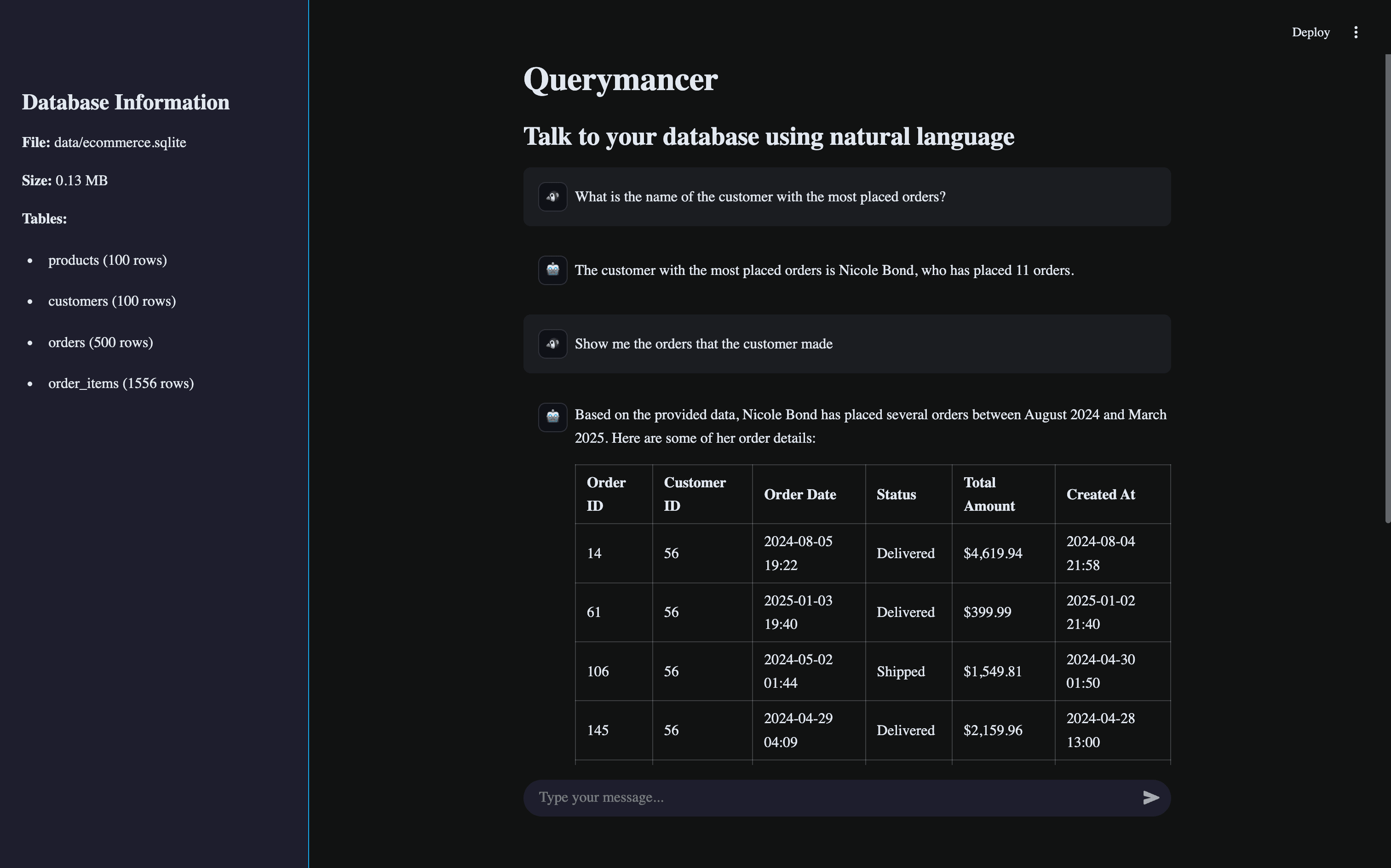Thinking and Acting - Build an AI Agent
Build an AI agent that lets you to talk to your database. Working with a local LLM using LangChain and Ollama.

AI agents represent the evolution from fixed workflows to autonomous problem-solving systems. Unlike workflows that execute predefined steps, agents dynamically determine their approach based on the task at hand. This tutorial builds Querymancer, an agent that transforms natural language into database queries, demonstrating practical agent development for real-world applications.
Why SQL AI agent? Database interaction requires specialized knowledge of SQL and database schemas, creating significant bottlenecks for non-technical stakeholders and even experienced engineers working with unfamiliar databases.
SQL agents decrease dependency on database administrators for routine queries thus empowering users to extract insights independently. This not only accelerates decision-making but also enhances data-driven culture within organizations.
Consider these real-world applications:
-
Marketing Analytics: A marketing director needs to analyze campaign performance across customer segments but currently waits 3-5 days for each custom report from the data team. With a SQL agent, they directly ask questions like "Show conversion rates by age group for the Q1 campaign" and receive immediate insights, reducing analysis cycles from days to minutes.
-
Operations Management: A supply chain manager monitoring inventory levels across 50 distribution centers previously relied on static weekly reports. Using a SQL agent, they can now ask "Which products will stock out in the next 7 days?" and make proactive decisions that reduce stockouts and emergency shipping costs.
When building SQL agents, some common challenges emerge:
- Constructing correct SQL from natural language
- Understanding complex schema relationships autonomously
- Implementing effective reasoning chains for multi-step problems
- Balancing exploration efficiency with thoroughness
You'll learn to build an agent that explores database structure, understands table relationships, and constructs appropriate SQL queries to answer user questions. The agent architecture principles are applicable across different domains and can deliver immediate practical value.
Tutorial Goals
- Build agent transforming natural language to SQL queries
- Implement specialized database exploration and querying tools
- Create reasoning framework for intelligent tool selection
- Develop modular architecture separating components
- Create streamlined Streamlit UI for database interaction